Food and Culture on the Camino de Santiago
By Rebecca Brown
El Camino de Santiago (The Way of Saint James) is one of the most popular pilgrimages in the world. On top of being a spiritual journey, it is famous for its history, culture, and cuisine. The fascinating region of Galicia has plenty of unique experiences to offer to the hundreds of thousands of pilgrims that undertake the Camino each year.
A brief history of the Camino de Santiago
The Camino Santiago dates back to the 8th century, and the major routes have been in use for over a millennium. Many Christians believe that Saint James, one of the twelve apostles, evangelized in present-day Northern Spain.
Upon his return to Jerusalem in 44 AD, Saint James was beheaded. His followers had gathered his remains and transported them to Iria Flavia, a place located right next to what is now known as Santiago de Compostela. For centuries, they remained forgotten.
In 814 AD, Saint Pelagius rediscovered the tomb of Saint James and pilgrims have been flocking to the site ever since. Today, the crypt of Saint James lies under the high altar of the Santiago de Compostela Cathedral. In 1993, a network of four Camino de Santiago routes was declared to be a UNESCO World Heritage Site.
Culture
The Eugenio Grannell Foundation
If you are an art lover as well as a pilgrim, a visit to the Eugenio Grannell Foundation in Santiago de Compostela is a must. Aside from the legacy of the famous Spanish-born surrealist painter, the museum is also home to the works of Miró, Copley, and Cruzeiro Seixas. From time to time, the museum hosts art workshops, theatre plays, and temporary exhibitions.
Traditional music and dance
The region of Galicia is famous for a traditional musical performance known as foliada. The origins of foliada most likely lie in Celtic music. A typical foliada includes flutes, violins, pipes, and bagpipes (gaitas). If you want to hear a foliada, be sure to stop at a traditional Galician bar during your journey.
Casa da Troia
If you plan to complete your pilgrimage during the Semana Santa (Easter Week) or summer, take the opportunity to visit the Casa da Troia in the old town of Santiago de Compostela.
In the 19th century, the building served as a dormitory for university students. Today, the museum gives visitors a glimpse into the university life of the late 19th century.
The famous Spanish writer Alejandro Pérez Lugín set his novel “La Casa de la Troya” (House of the Troy) in the rooms and chambers of the old boarding house.
Museo de Peregrinaciones
Every pilgrim that has walked the Camino should visit the Museo de Peregrinaciones (Pilgrims Museum). It is a great place to learn about Saint James, the pilgrimage, the cathedral, and the city of Santiago de Compostela. On top of allowing you to get a deeper understanding of the pilgrimage, the museum offers a great view of the cathedral’s towers.
The City of Culture in Galicia
As its name suggests, the City of Culture is a complex of cultural sites. It is located in Santiago de Compostela. The City of Culture is a 21st-century project led by the American Architect Peter Eisenman.
The 4 buildings of the complex are conceived as 3 parts, the Galician Library and Periodicals Archive, the Center for Cultural Innovation, and the Museum of Galicia. Since it opened its doors in 2011, the center has been hosting the best cultural expressions of Europe and Latin America as well as Galicia.
Cuisine
Local beverages
Your Camino won’t be complete if you don’t get a taste of the famous Albariño wine. Albariño was first produced by Spanish monks in the 12th century. Its rich stone fruit flavors have made it popular all over the globe. This famous white wine really sings when you pair it with seafood.
Most pilgrims like to celebrate the end of the pilgrimage with a local pomace brandy known as Orujo. This one-of-a-kind drink is distilled with herbs, nuts, and dried fruits.
Local food
Galicia is well known for its iconic seafood dishes. If there is one dish you must indulge in, it is undoubtedly the Galician-style octopus, locally known as pulpo á Feira. Melide is one of the best places to try this famous specialty.
Preparing pulpo á Feira is truly an art. The key is to find the right touch of olive oil, paprika, and salt. The dish is typically served with cachelos (Galician-style boiled potatoes).
Baked scallops served in shells are also characteristic of the region. The dish has a few variants. It can include ham, tomato, garlic oil, paprika, and breadcrumbs.
If seafood is not your cup of tea, don’t worry—you won’t stay hungry. The famous Galician garlic soup has fueled many pilgrims throughout their journey. This humble, but traditional dish includes garlic, broth, olive oil, bay leaf, paprika, poached egg, and bread.
Foods and drinks in Logroño
If you take the French Route, you will pass through the city of Logroño. If there is one place you should stop for a longer culinary adventure, this is it.
Not only is it a great place to sample Spanish cuisine, but you should also use the opportunity to stock up on food and drinks (you won’t see any shops for 8 miles after you leave the town).
Pilgrims mostly like to visit the many bodegas dotted around the outskirts of the city, but the heart of Logroño has a vibrant nightlife. It is home to some of the best wine and pintxos bars in the country. Pintxos are small snacks eaten in taverns and bars. They are named after the toothpicks they usually come with.
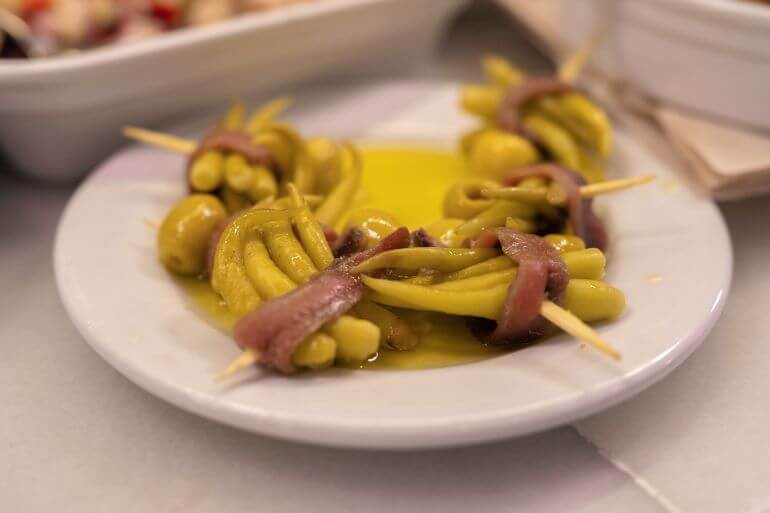
Pinxtos — Photo by Iñigo De la Mazaal on Unsplash
Bars that specialize in mushroom dishes are very popular as well. Logroño is also famous for its ice cream-making tradition. You can find any ice cream flavor imaginable in the city, including orange sorbets, goat cheese with blueberries, Marzipan, and Ferrero Rocher.
Food and drinks in Santiago de Compostela
Santiago de Compostela is one of the greatest culinary destinations in Spain. There you will find an abundance of delicious beef from the grassy Galician hills and fresh seafood from the cold waters of the Cantabrian Sea.
Santiago de Compostela is one of the best places to try chuletón, an exquisite grilled steak cooked medium rare and finished with a dash of sea salt. Galician beef is well-known across Europe, so grab the opportunity to enjoy it straight from the source.
Before you catch your flight back home, make sure to pay a visit to the city’s famous traditional food market—Mercado de Abastos.
Are you wondering what delicious goodies to get at the market? The creamy and mild tetilla cheese is a great option. It is Galicia’s best known variety of cheese. Thanks to its unique pointed dome shape, it’s easy to spot.
General advice for the Camino is to pack light. But, once you get to Santiago de Compostela, the end of your walk, you can fill your bags with as many souvenirs and treats as you want.
About the author:
Rebecca Brown is a translator, avid traveler, and bookworm. Her job has given her the amazing opportunity to travel to dozens of countries around the world, and writing on Rough Draft gives her a chance to try to showcase some of them.
Photos credited to Barbara Nelson were provided by the photographer for exclusive use on Traveling with Sweeney. To see more of her collections: Barbara Nelson Photogaphy

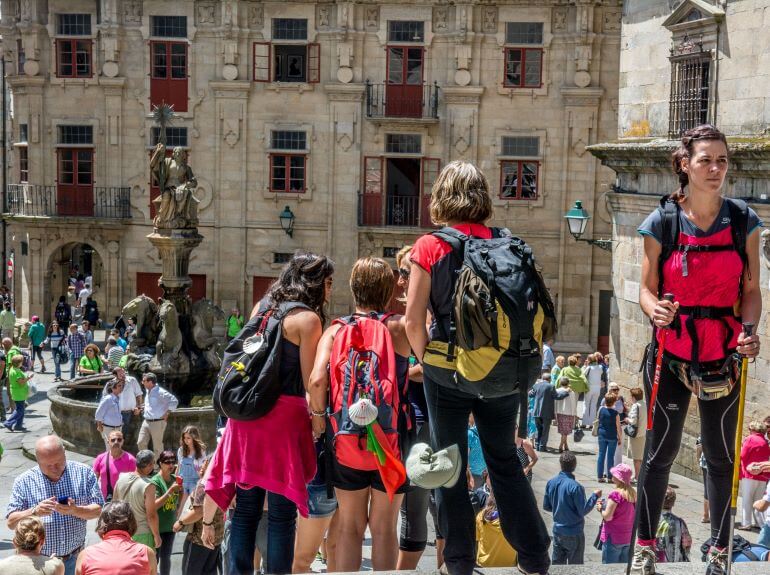
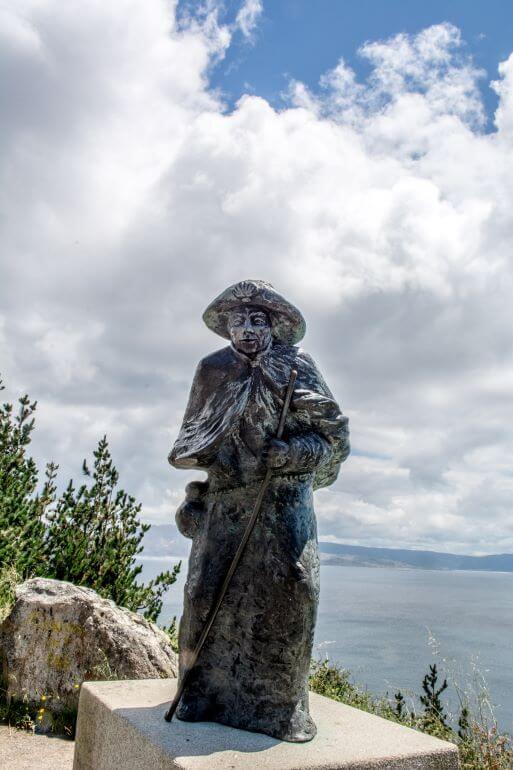
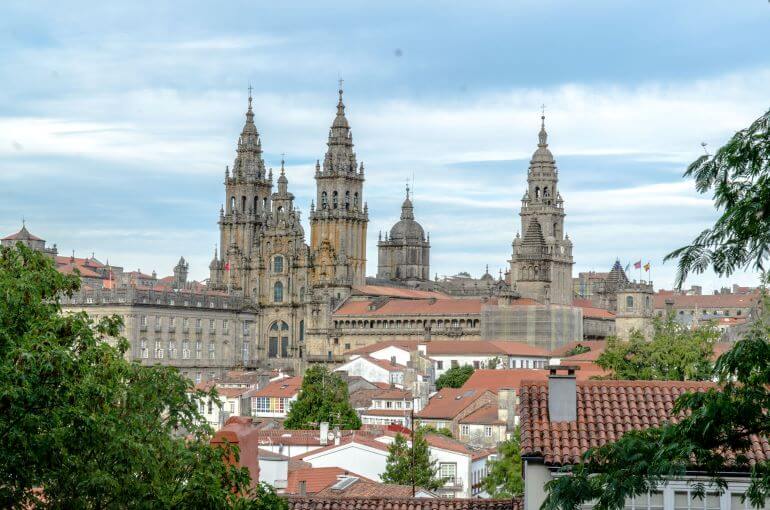
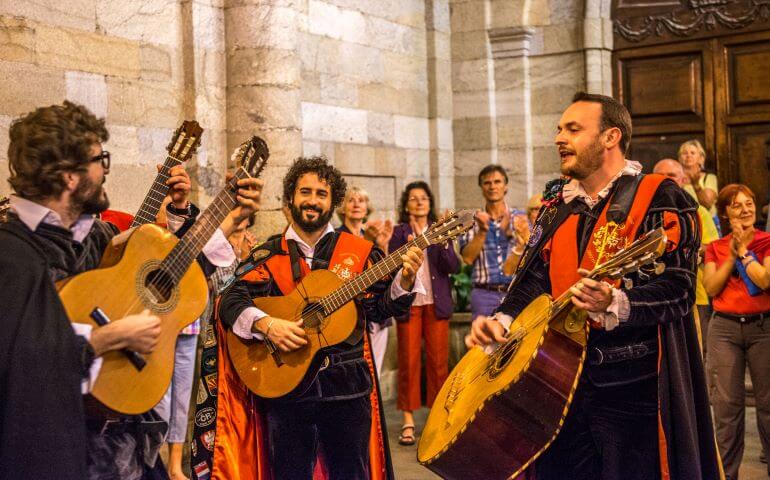
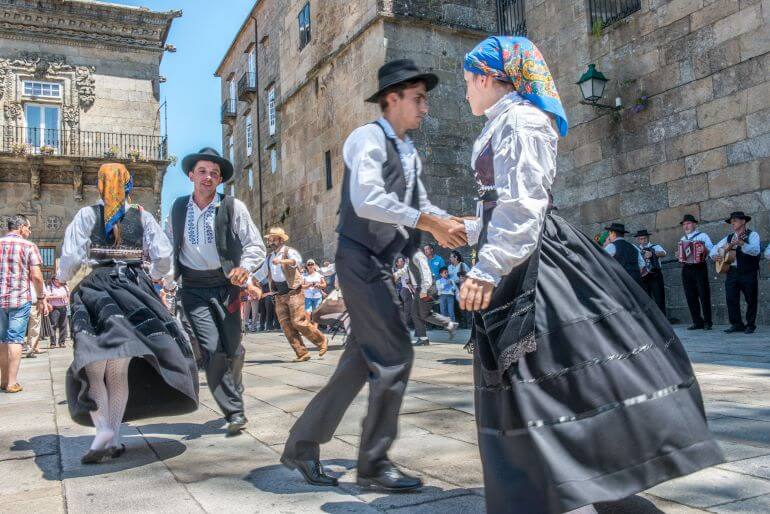
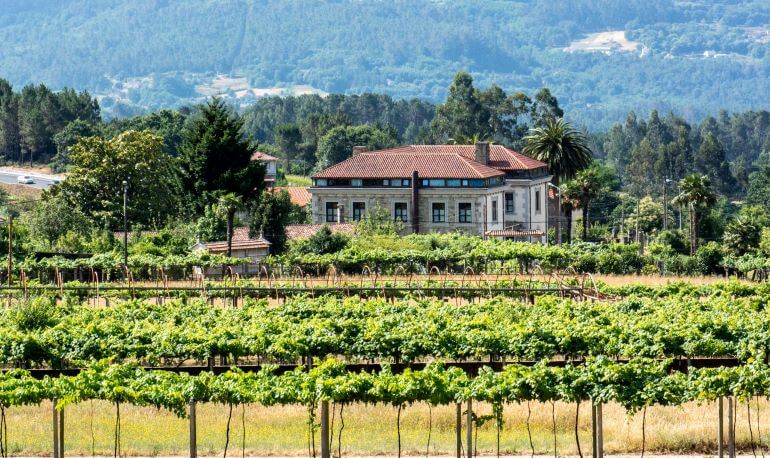

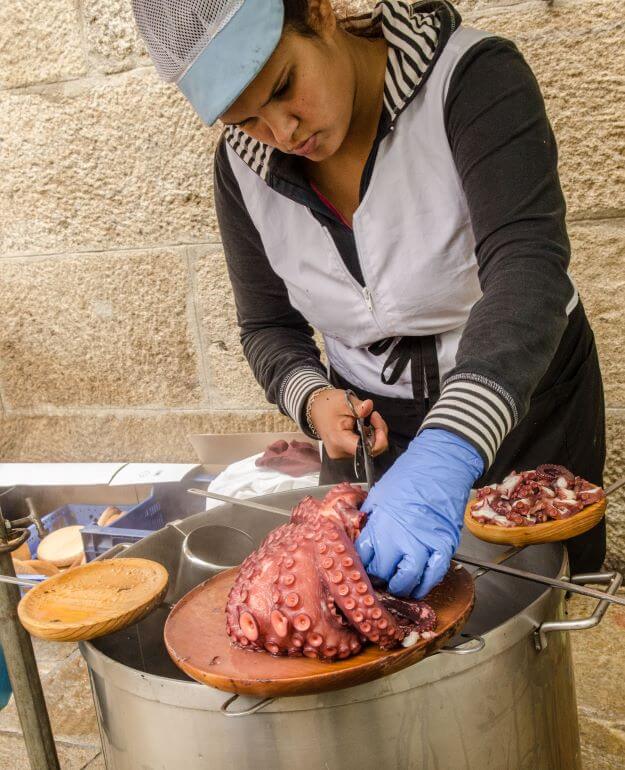
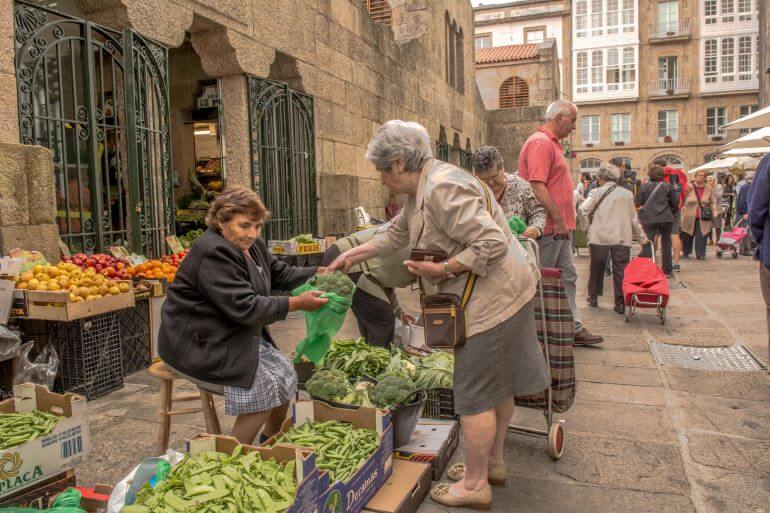
Wow. Sure would lime to try to dsnce foliada, taste Oruji. And est the pintxos. So much inr e pilgrimage.
A fascinating post! Totally agree with tasting Albariño – brings memories of that delightful fresh wine with the succulent seafood of that coast! And I’d LOVE to see the dance and hear the traditional music!
So interesting. I’ve never been to Camino de Santiago but I love octopus so the pictures you posted about the food make me want to go. I find I learn so much about the culture through its food.
What a fun mix of history, culture, and food. You seem to uncover som of the dearest places to explore. Keep feeding us these wonderful destination ideas.